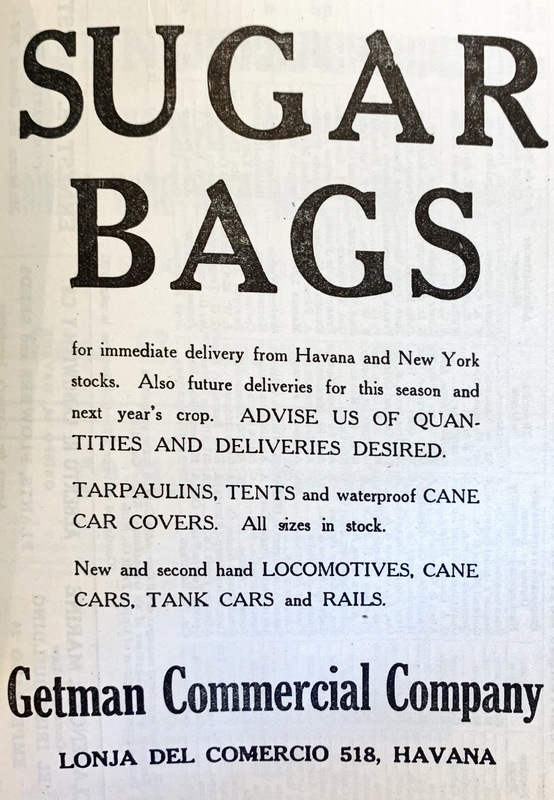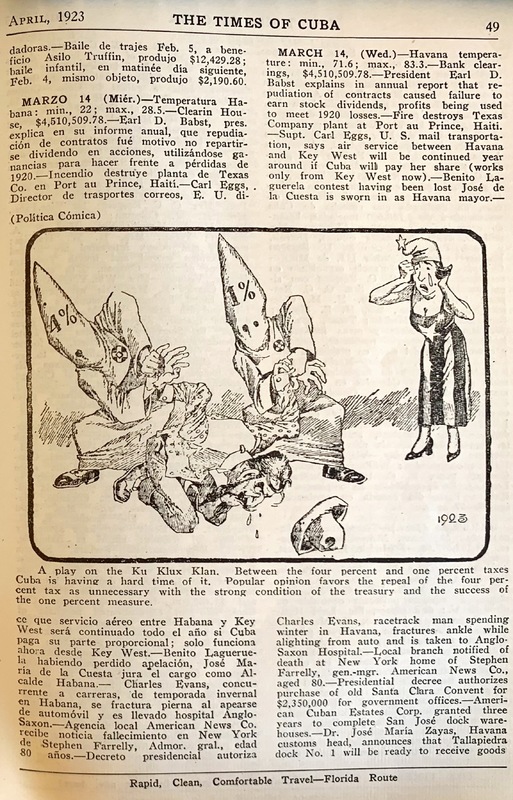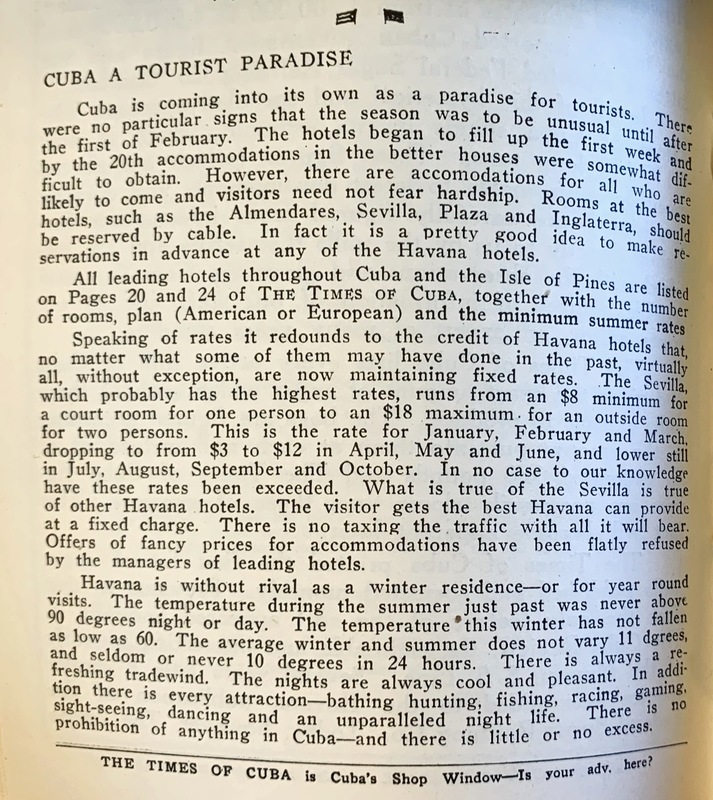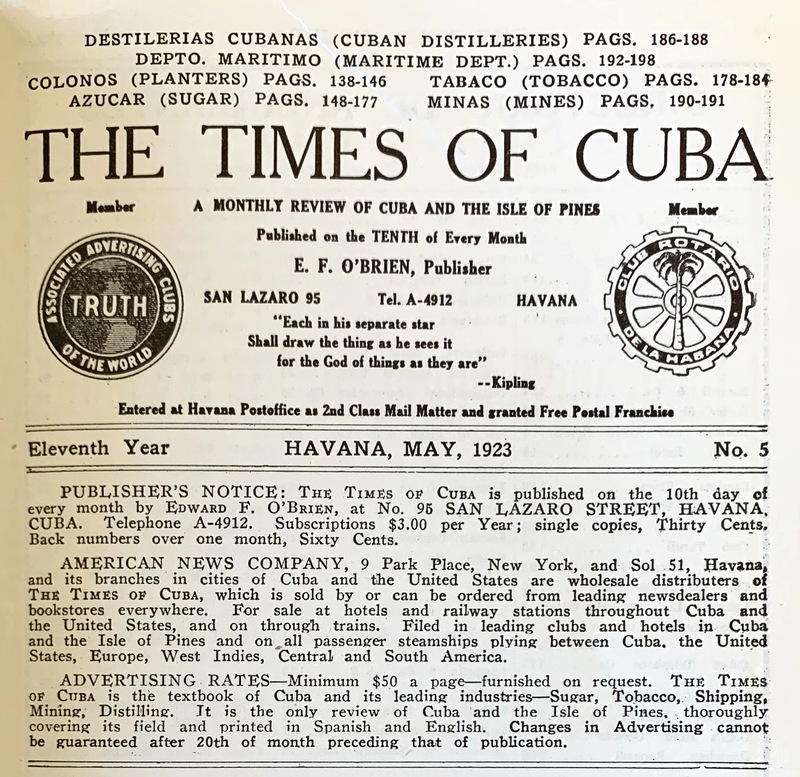An American Investment: Cuba
The Times of Cuba, printed in Cuba and written in both Spanish and English in the 1920s is a newspaper that everyone could enjoy. The Times of Cuba could be found on trains and hotels, circulating in areas such as the United States, Europe, the West Indies, and Central and South America. These five copies were printed from March to July 1923, each with similar formats, comprising of translated news articles and American business, Cuban sugar maintenance, and Cuban petroleum advertisements.The paper served to portray and strengthen the developing economic relations of Cuba after the Spanish-American War (1898).
The newspapers size (8x5”) is comparable to handbooks found on airplanes and trainstoday, thus enabling easy distribution and transportation for travelling people to read it. Like many newspapers today, there are signs of usage such as torn pages and snipped articles and advertisementsin The Times of Cuba. Over the span of the five issues, the cover of the newspaper changes in material, resulting in a sturdy binding that is less prone to wear and tear.
The newspapers were an important actor in the establishment of Cuba as an important asset in world affairs. The paper’s content revealed many aspects of Cuban relations with the United States, such as the strain that the U.S. placed on the Cuban economy because as Cuba made its way onto the world stage, the United States began to exploit its resources. As the U.S. sugar plantation investment increased from 50 to 600 millionn the early twentieth century,the investment portrays the deeply interconnected economies that Cuba had with the United States.
After the United States aided Cuba in the Spanish- American war, ending Spanish colonial rule in 1898, there was a strong opposition among Americans to the potential annexing of Cuba by the United States. Yet as the early twentieth century approached, it resulted in American bankers and businesses dominating the economic sector of the Cuban sugar industry. The advertisements aim for Americans to support businesses and for Cubans to repair their sugar mills and oil factories, The newspaper appears to be a result of the U.S. intervention, because although it is printed in Cuba, it is direct towards to U.S. audiences, portrays U.S. news, was distributedin the U.S. and was mostly written in English.
TheTimes of Cubashows many signs of the incremental, and soon exponential, U.S. involvement in the Cuban economy. The above to the right is a passage from the Times of Cubathat encourages tourists to travel to and from Cuba. Cuba takes pride in the fact that they are a well-known tourist country because their worth began to steadily rise as more visitorsbooked hotels and took advantage of the year-round warm weather. The newspaper instructs visitors on which hotel to stay in, which oil to get, and which American bank to go to.
As Cuba began to further integrate itself into the world market, building a new national identity, the United States intervened when Cubans were most vulnerable, during the Spanish- American war. The aid that the U.S. provided may have left Cubans feelingndebted toward them, which may shed light as to why Cubans comply with the increase of American bankers investing in their economy.
- Janet Nguyen




